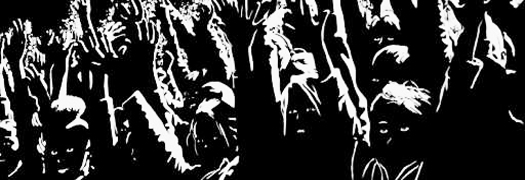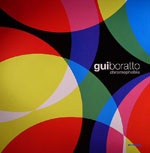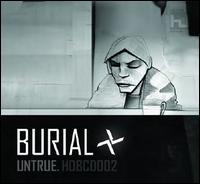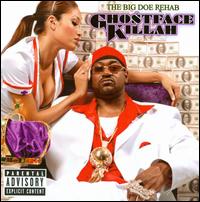
Features | Lists
By The Staff

Blonde Redhead
23
(4AD)
You know it was a strong year, with a surfeit of new artists cracking the scene, when a well-established band releases what’s probably their strongest album to date and it doesn’t even make our top fifty. With 23 Blonde Redhead officially graduate from a group whose novelty oscillated between the consistent and the curious to literate purveyors of efficient and melodious indie pop.
From the stark single-strikes of delay-laden piano and droning guitar swoop that heralds the album’s title track the listener knows that Blonde Redhead is putting on hold their more writerly eccentricities, however temporarily. 23 is a dense and intricate (but accommodating) neo-classic rock take on shoegazing. Where in the past the band’s three-member lineup worked with space and repetition, here they are layered into magnified, exploded interpretations of their sound. It’s a reinvention of the best kind—a natural culmination of previous works’ momentum that doesn’t throw the baby out with the bathwater.
Conrad Amenta

Gui Boratto
Chromophobia
(Kompakt)
With Chromophobia, Kompakt may have their landmark release — a masterclass in how to draw out life, warmth, and joy from the juxtaposition of minute rhythmic pulses and microtonal melodic phrasing. With Boratto’s Brazilian roots he could easily be lumped in with the late great Suba, who used the same techniques to flavour his production work with Cibelle and Bebel Gilberto. However, Boratto shares more in common with fellow minimalist Villalobos in that he never swamps the subtle production work with traditional Brazilian rhythms like bossa nova. The listener can focus on the purity of the individual elements, experiencing the dynamic tempo or tonal shifts as another layer is introduced. You can hear that in the sleazy NRG of “Shebang” where the percussive track stops at 4.32 and then re-establishes itself, re-assembled, u-turning the song in on itself with a newly resigned and reflective tone. It’s present in “The Blessing,” where miniature fireworks explode behind muted hi-hats and a burbling melody line, each at a different speed but all inexorably travelling in the same direction. Elsewhere, on two-chord wonder “Mala Strana,” featherlight bass pads and a muffled delirious lead line dance around each other like satellites locked in orbit only for singular piano notes to shoot through like shards of light, the other instrumentation fade and then—the piano—solitary but still beaming like a search flare into the vast blackness.
For purists, some may have reservations with the unashamedly euphoric pop rush of single “Beautiful Life,” the only vocal track on the album. It would be a shame as it is a hedonistic, glorious slab of music. Revving with a miniature engine it begins ping-ponging through synthesised snare-shots and a niggling riff until, after a full two minutes, his wife’s semi-robotic Astrud-like murmurings begin: “I can see life, I can feel love, I can see the sun; what a beautiful life.” It’s hard not to be swept up in the emotion as the throbbing swathes of golden liquid ooze out of the speakers. And then, as if that weren’t enough, a slinky New Order bass line strides centre stage propelling the track skyward. At well over eight minutes I still find myself going to the rewind button again and again. Plus, for whatever reason, Chromophobia hasn’t become ubiquitous over the last few months: I seldom hear the songs in DJ sets or booming from hipster bars and clubs. Therefore I (and you) I can still relish Chromophobia for what it is: a dance album with a heart—head music to make you swoon.
Danny Roca

Burial
Untrue
(Hyperdub)
I’ll be damned if this thing makes it out of the winter months, or out of the dark, or out of the furrowed brow of chastisement that seeks to celebrate Untrue both for its commercial invigoration of a genre blip a few years ago thought to be stomped out by grime and for reminding everyone that pretty much everything on this album is gently un-club-ready. A weird dichotomy to focus on, maybe, like orphaning poor Burial in the hinterlands away from the recently set limners of UK house, cutting Untrue’s gut to attract the noses of undernourished indie dogs. Or at least that’s how it’s seemed so far; Burial’s sophomore record is enchanting, often sententious dubstep that postures its inscrutability as complexity, otherwise sticking pretty hard to essentials while the rest of the world—America—finally catches on.
By which I mean: Untrue nails it. And by “it” I mean every single sad, routine motion you call, collectively, your life—no matter who you are or what you’re doing, I know you’re just staying warm, staying dry, and trying to keep your head up. And then Burial nails the stuff in between, all the thoughts of self-doubt and self-waste accompanying the routine so that time for original thoughts, which you’re having despite how bitter they are, become impotent because there exists absolutely no way to implement them. That’s why you grind your teeth when you sleep, why “Etched Headplate” loses confidence between the momentum of fingersnaps, the dry acceptance of zippo strikes, and the black hole of bass. It’s vocals—gurgled babytalk—are just another rhythmic element, a shoreline of anticipation and retardation, intimidated by the melody. And that melody is just as internalized as every half-baked image of loss or desolation or jealousy that Burial wields mercilessly.
If only “In McDonalds” could manipulate reality so; if only I could attribute my every fast food visit with the Oedipal nostalgia of that track. I’m reminded of a story about a homeless guy that crapped inside of a McDonalds and then picked up his dung with a napkin and placed it on the counter. Untrue is not like the turd, it is like the brain behind the turd, disappointed in itself for being so obvious with its statements, shamed enough to keep crawling ever inward until it’s making a tearful mess on the floor. I mean, “Homeless” can’t help but drop its steady bottom half, pulling its only ties to a soothing tempo so that “U.K.” has to restore the peace of mind.
I’d always figured dubstep to buy into that method anyway, struggling with itself to possibly demonstrate just how difficult it can be to chill the fuck out and then chilling the fuck out to elicit maximum chillage in the listener. How about that bouncing blue tone appearing too briefly in “Raver”? If that could last forever, I would enter the world each morning stress free. It doesn’t and I won’t and so continues the Burial equation: testing dread’s daily limits until they mathematically make sense. Untrue’s a tease like that, reeking of competence, patience, efficiency and “I told you so”—so we can look optimistically to the spring, abandoning this very, very pretty and satisfying record.
Which allows me a final, bloated prediction:
Fall 2008: When everyone stopped hating on trance.
Dom Sinacola

The Clientele
God Save the Clientele
(Merge)
Alasdair MacLean may be less of a sad bastard on the Clientele’s third proper album, but if anything he’s even more narcissistic. The fact that his romantic vision has brighter corners than on Strange Geometry (2005) just serves to bring the band full circle into a less lo-fi version of the wide-eyed, naive pop that marked their earliest work. Though even the most upbeat tracks aren’t as simple as they initially seem: “Bookshop Casanova,” the closest the band will probably ever get to ’60s pop, nevertheless contain all the loneliness and unfulfilled desire that mark their most melancholy work. The difference is that instead of sounding frustrated and defeated, it’s full to the brim with cathartic energy, MacLean translating helplessness and “coming undone” into the thrill of surrendering himself to the romantic whirlwind. Likewise, “Here Comes the Phantom” recalls Kate Bush’s “Hounds of Love” in the way it equates love with being overtaken by a mysterious predator; not to mention how dizzying both songs are in their sexually-charged imagery. Even the most despairing moments seem cloaked in this vivd sense of mystery: on “Isn’t Life Strange”, MacLean moves from the desolation of “I sit beside her/But nobody’s there” to the release of “Spin me round/I’m floating”. If God Save the Clientele feels less consistent than some of their other albums it may be because the more familiar material (“Dreams of Leaving”; “Somebody Changed”) feels a little too sleepy in comparison. Then again, it’s hard to imagine the band sustaining a whole album of the kind of weightlessness that marks the best tracks here; though if they ever do, they might just have their masterpiece.
Joel Elliott

Gultskra Artikler
Kasha Iz Topora
(Miasmah)
I think Joel and I each would have given a testicle to include on our year-end lists this amazing record, introduced late in the game to us by Mark who is often introducing us to stuff that makes us want to give our testicles to some higher purpose. Alexey Devayanin’s production is dense but precise; found sound and instrumentation roughly hewn from the motherland are amassed into ziggurats, glorious aesthetic born of functional form. I mean, headphones treat this thing like a golden god. What’s crazy is that Devayanin’s erecting these post-pyramids on the back of Russian folk music—like anachronistic, almost alien landmarks. Like some Stargate shit. Expeditionary, but also reformative and constructive, Kasha Iz Topora isn’t all over the map because it’s too busy rewriting the map. It does cast a wide net, though, and it’s interesting that such a culturally invested crusade could still draw comparisons with some of 2007’s other best music: “Samouchitel” has plucks, plops, and molded droplets of guitar (plus percussion shuffling ‘cross channels) that reminds me of Victor Bermon’s equally headphones-a-genic Arriving at Night; the ethnic associations of “Tvoi Ganteli” eventually disintegrate into a dark, clicking ambience that wouldn’t have been too out of place on that Supersilent record; the last half minute of “Krovinka Moya” is like Jessica Rylan trying to hold a tune; “Propolis” is a Radicalfashion outtake, right?; and the closer sounds like a remix of a motif from Mass Effect. All of this is bound together by one man’s effort to dig up his country’s bones then break and melt as necessary to create beacons pointed at the sky. So let’s call Kasha Iz Topora “Prothean folk,” christened with a bottle of cognac smashed against its gleaming obelisk.
Chet Betz

Ghostface Killah
The Big Doe Rehab
(Def Jam)
Ghostface has always been known for abstract rhymes that require one to slow down the tape, rewind, and analyze. The Big Doe Rehab, however, is about the murderer with no face spitting his words directly into ours, less concerned with startling than with unpacking the depths of his lyrical chambers and loosening them up for the surface. Nonetheless, a straight-tongue’d Ironman is still as captivating as a television’s glare on a baby’s eyes; instead of sending us on a head-trip, Ghost’s sixth album (do you truly count, More Fish [2006]?) allows us to sit back, bob, and confidently sing along the second and third times around. For sure, there’s some filler here and a handful of run-of-the-mill support rappers but there are also some banging soul beats and gripping guest appearances: Ghost, Meth, and Raekwon tackle the sexual escapades of “Yolanda’s House” with such ease it reminds us just how deftly these rappers have mastered their craft over the years. This may seem like he’s taking a piss on all the critical hyperbole he’s gotten in the past decade, and yes, while it’s difficult to recreate the finest moments of Ironman (1996) and Supreme Clientele (2000) in 2007, it’s also a strange afterthought for Ghost to drop one of the best hip-hop albums of the year and make it just seem like a harmless, fun time.
Traviss Cassidy

Jens Lekman
Night Falls Over Kortedala
(Secretly Canadian)
It was a strange time in my life: I was living in New York for the summer — my first stint on the hot, lonely East Coast — and I’d just broken up with my girlfriend. I’d stumbled upon Jens weeks earlier, while obliviously making my last mixtape for her. The break-up was messier than 2Girls1Cup; out of some desperate, incomprehensible emotion, I found myself going back again and again to the Lekman track I’d burnt for her, and, eventually, the rest of the album. I don’t know if it was my weakened emotional state or the guy’s innate likeability, but it ended up being great timing for me and Jens: What started as a casual fling quickly turned into a heated romance, all sloppy make-outs and heady declarations of love. Then Night Falls Over Kortedala arrived in my mailbox.
There’s basically one good reason not to like Lekman: You don’t believe him. Unlike his deep-voiced cohorts in the Magnetic Fields and the Modern Lovers, the Swedish songwriter sings without a hint of irony. For some, that leaves his songs too silly, steeped in too much cheeseball Bacharach/David sincerity and referential humor to take as genuine displays of feeling under the optimistic rays of their sunny sound. Especially with this album’s peacock-feathered production, where funk guitar and stuttering drum samples share space with lines like “This has of course nothing to do with anything / I just get so nervous when I’m talking to you” (on “Kanske Ar Jag Kar I Dig” — translation: “Maybe I’m in Love with You”). Shouldn’t he be singing about something more, I don’t know, sexy over that beat? But Lekman’s charm on this album lies in being able to kick out the jams and channel the awkwardness of _Annie Hall_-era Woody Allen with equal authenticity. “Opposite of Hallelujah” would be easy to mistake for a nihilistic Allen scene (“I still never told you ‘bout unstoppable sorrow”) if not for its unflagging major chord piano-pop bounce. It’s a funny contrast, of course, but only until you realize the poor guy really means it.
As a generally happy dude myself, my usual diet of Elliott Smith and Ryan Adams was rendered inedible in the wake of the break-up. But Kortedala? Like a just-right bowl of oatmeal. When I heard him sing “I’m leaving you because I don’t love you” over that burbling bass line and that vintage piano, it wasn’t the sound of a snide ex-lover rubbing it in — all that production was just to cushion the blow. While this album — his most colorful and lush — does dabble in outright comedy on tracks such as highlight “A Postcard to Nina” and “Shirin,” a ballad for his illegally practicing hairdresser, plenty of the pain of his more musically bare releases is still present. Perhaps more than any other contemporary musician, Lekman makes heartbreak sound utterly bittersweet. And that’s something anyone can believe in.
David Greenwald

Loney, Dear
Loney, Noir
(Sub Pop)
Nietzsche had a sense for truth he often compared to a sense of smell: truth smells like a summer wheat field, and lie like carrion. Loney, Noir smells like white lilacs right before the blooms open.
I’m new here at CMG, but when I suggested Loney, Noir for an Honourable Mention the big cheese gave me a hearty slap on the back and said, “i really look forward to reading that, i don’t get Loney, Dear at all.” I didn’t mention the comma splice because my heart was in my throat; so, uh, explain why a great songwriter’s great songs are great, eh? Maybe justify unexperimental pop music along the way? Gulp. I had a dancing about architecture moment.
Nothing to be done; my task demands both self-undoing humility and absolute arrogance. I cannot explain, or claim to know precisely, what makes Emil Svanangen’s songwriting so superlative, but I defy any of my illustrious peers to come closer than this: I have a sense for it. Maybe you do too, or maybe you’re one of the people who passed on “Umbrella.” You aside, I have it, and Loney, Dear’s feather-light melodies tickle that sense tirelessly. His sense of proportion is incredible, with just enough home-honed woodwind and percussion to underpin and just enough double-tracking and chimes on top. He’s Raphael, not Turner. Each turn of a melodic phrase is placed with ship-in-a-bottle delicacy, the whole thing unified in harmony and perfection like a Doric column.
And then — on notes like “grandfather” in the bridge of “Saturday Waits” or the transposition of the melody to the higher octave at the end of “I Am John” — the bloom opens. Not a thunderous, Romantic blast of emotion, but a soft, warm intensity that adds the final piece you never knew was missing. On a second listen, the songs all build toward these moments and are recontextualized as a sort of yearning drive toward relief. This melodic drama matches the lyrical vignettes that often culminate in the gentle grace of lines like, “I got a feeling of you and we danced for so long / I want your arms around me like lovers due” — lines made all the more affective by their slightly warped use of the language. I further defy the most hard-hearted experimentalist to wring as much hard-won joy from 14 minutes of arty noise as is given freely to me in just one long, pure note of Svanagen’s falsetto.
If you don’t have the nose for it, then there’s not much to be done. And if you do, there’s still no way for me to communicate my iron-clad sense that this record — and not that one you are attached to with equal justification — is the shit. You just have to take my word for it. And maybe, if my flailing steps are danced just so, you’ll see a reflection of your ardency in mine.
David Ritter

Miracle Fortress
Five Roses
(Rough Trade)
This year saw the release of two solo albums by two solo artists who managed to recontextualize a particular retro aesthetic and express love and respect for the past without giving off that uncomfortable impression that they just wish they could swim back up into the womb. They’re two great albums that are difficult to bring up without referencing Brian Wilson, that are buoyed by psychedelia and deal in melody while putzing around with fuzz and drone on the side, and sadly, though they could have coexisted in the 1960s, it seems there ain’t room enough in 2007 for the both of them. The one that we chose to vaunt (or Pitchfork chose for us) was Panda Bear’s Person Pitch, an album I happen to like very, very much, but can’t change the fact that Miracle Fortress’s debut Five Roses is my favourite album of the year.
Miracle Fortress just gets it all right the first time, from the bouncing shuffle of “Next Train” to the aching “Beach Baby,” a downtempo song that yearns and yet refuses to fall into balladry. The whole album is remarkable for the way melodies drop out and reappear renewed, vigorous and tender and warm, gently climbing and building, clenching, unclenching, and . I guess it pretty much sounds like I’m talking about sex, but this album is the way good sex should be: not afraid to take a few moments to just stop, take stock of where we are, and exhale. Take in the ambience.
It may be this ambience that kept Miracle Fortress off most of the best-of-year lists. The incessant keyboard murmurs aren’t for everyone, and that’s fine. But in response to those critics who threw Panda Bear to the top of their best-of lists and then criticized Miracle Fortress for its lengthy indulgences in instrumental clatter and hum, I’m like: “Hello? ‘Bros’?” Personally, I admire both artists’ willingness to follow tangents; I just happen to prefer the discoveries that Five Roses uncovers at the tail end of its digressions, the trembling moment of realization that unfurls from the layers of echo. That moment is why Panda Bear has my great admiration, but Miracle Fortress gets my shuddering heart.
Jessica Faulds

Beanie Sigel
The Solution
(Roc-A-Fella)
This is fate! Beanie Sigel will never be appreciated and he knows it!
The most inexcusable exclusion on Cokemachineglow’s 2005 year-end list was Beanie Sigel’s The B.Coming, a big conflicted midnight rambler of a rap record that achieved minor classic status through Beans’ tormented mic performance and the presence of exactly one perfect track, the infinite “I Can’t Go On This Way.” About fifteen people on the planet recognized the album’s straight-forward brilliance, and almost all of them were critics on indie rock websites, and as you may be guessing, I was one of the chosen few. I have spent the intervening years doing two things: 1) telling other people that they should really give Beanie Sigel a chance, and 2) listening to “I Can’t Go On This Way.” I also spent a significant portion of that time watching the Lord of the Rings movies.
But I digress. Beanie’s new record, which I will not be reviewing for Cokemachineglow but if I did I would give an 81% and Betz would lowball the combined rating to average out at like 68%, is a cursed release. Try as I might, it would never make the proper list of this or any other site for three reasons. First strike: slotting it against huge albums by Lupe Fiasco, the indomitable Wu, and the universally lauded Ghostface. Second strike: doing so in the month of December, a few weeks after critics submit year-end lists, such that even if the record did take root it would be neglected by most publications for timing reasons. Third strike: making it an absolute impossibility that this record would ever appeal to critics at large, let alone without hype and in the shadow of American Gangster. But this is also why it’s essential. By tempering the brutal, bleak hunger of a just-out-of-prison lyrical performance with bright Roc-A-Fella pop production, Beanie Sigel has created a worthy follow-up to The B.Coming — and one of the strangest mainstream rap records ever released by a major label.
Now, a lot of critics are confused by what’s happening here, but this is understandable: The Solution is a confusing record. It features guest spots from R. Kelly, Ozzy Osbourne, and James Blunt. Something is clearly amiss. But what should be clear to anyone who’s given the record even a cursory listen is that Beanie is rapping his fucking brains out, utterly refusing to commit a lackluster verse to tape, drawing breath while still rapping, hurling each word like a snowball packed until it’s ice at no one in particular, just a brick wall, just creepily standing there pelting the wall like a bully trying not to whoop someone else’s ass. Waves of violent ill will radiate off the disc. Excusing the (nevertheless) iridescent getting-laid paean “I’m In,” Beanie goes the whole record without sounding like he likes anything. At all.
I know Pitchfork keeps acting like 8 Diagrams is some psych-rap odyssey, but if it were really so strange critics (myself included) wouldn’t be jocking it so hard. It’s just some good Wu. A truly challenging album makes us work to like it. The Solution’s nihilism is painted in broad, blunt strokes and then, to the confusion of everyone with ears, married to a set of crisp pop-rap (occasionally club-ready) beats replete with bleating choruses and gaudy synth lines. But then it’s also like somebody listened to the record, all barbed wire and kittens, and in a masterstroke of inspiration was like, “Fuck it, make the drums harder, too,” such that lead-off single “All The Above” coulda been off The Inspiration until the drums got all steel-barrel-and-wrenches industrial. Later, the James Blunt sample comes in clipped and fucked while (over maudlin pianos and harpsichord flourishes, no shit) Beanie describes death in the second person and laughs to himself, “I guess you found Christ / I didn’t know he was missing.” And this is one of the subdued tracks; imagine the venom he’s got on “You Ain’t Ready For Me.” Beanie, that curmudgeonly fuck, has made another great rap record full of hateful party tracks and miserable, lonely love jams — a record that no one on the planet can truly like, but a remarkable achievement nonetheless from one of hip-hop’s great underdogs.
I mean, <a href=”http://web.archive.org/web/20080828033013/http://youtube.com/wat





